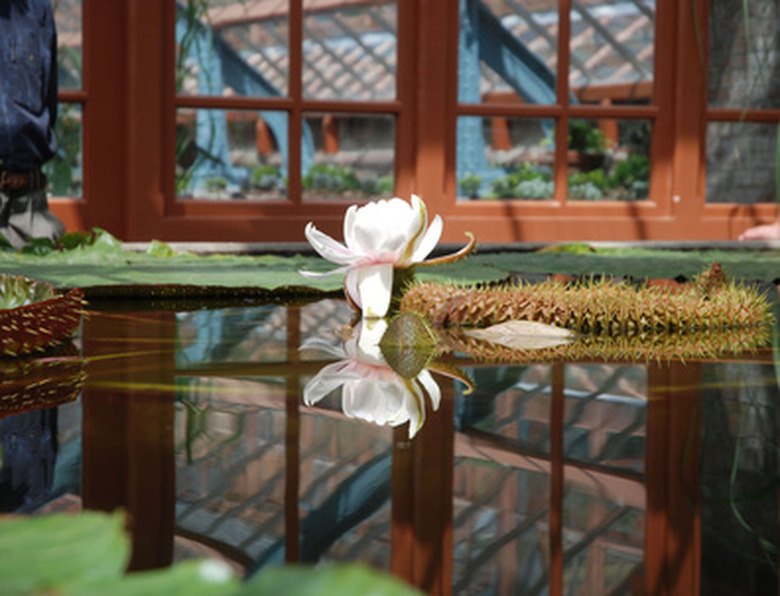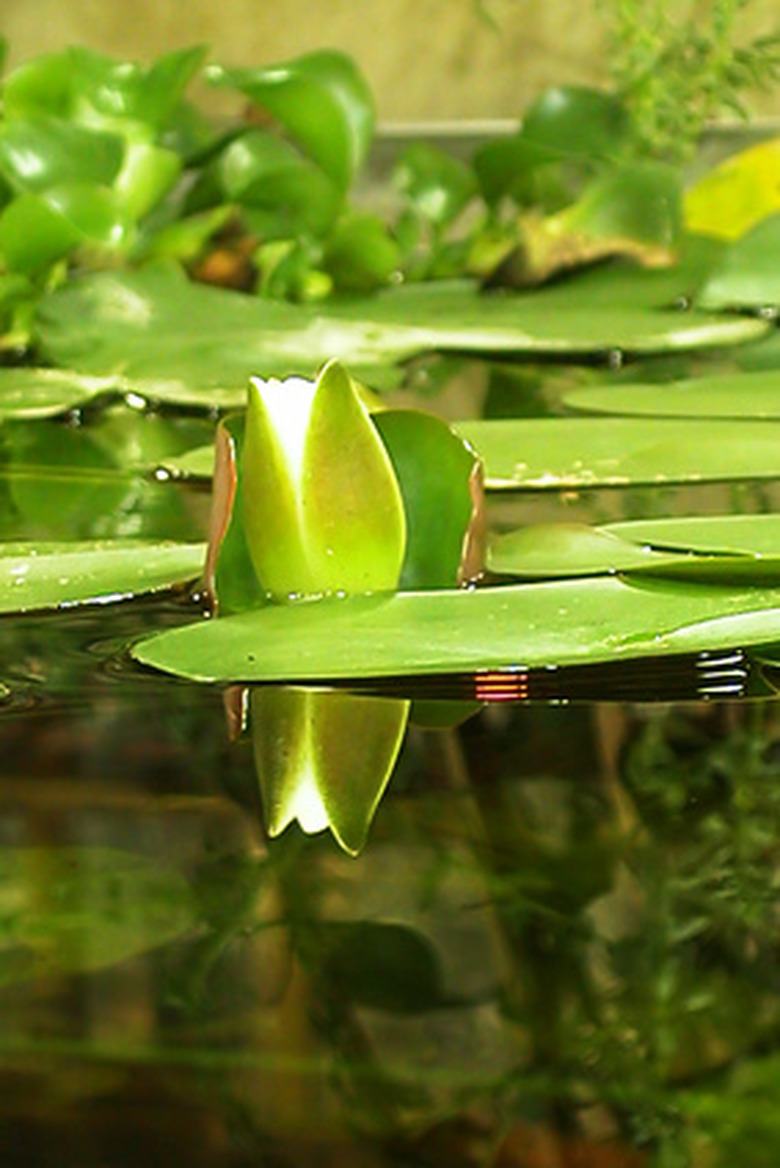Water Lilies Root Structure
Water lilies have spreading rhizomes and roots that anchor the plant deep in the mud of still, fresh surface water. The roots take up nutrients, as well as small reserves of water. They do not need to take up large reserves of water since the plant is submerged; the underside of the leaves can also take up water.
Hardy Water Lily
When the stems, leaves and flowers of the hardy water lily are hit by frost and die, the root remains safely anchored under water, where the temperature does not go below freezing. The plant re-emerges completely anew from the roots each spring, provided the entire water basin did not freeze solid.
Tropical Water Lily
Frosts can kill the entire tropical water lily, including the roots. The roots must be covered with at least a foot of still, fresh water. Some tropical water lilies produce tubers near the crown that can be harvested and planted for new water lilies.
Nature of Rhizomes
Rhizomes are actually underground stems, primarily used for storage. Water lily rhizomes store carbohydrates and proteins for dormant periods, especially in the winter. In spring, the rhizomes release amino acids and carbohydrates to support rapid shoot growth until there are enough leaves can take over food production.
References
- University of Illinois Extension: Constructing and Caring for Container Water Gardens
- "Lectins: Biomedical Perspectives"; A. Pusztai, Susan Bardócz; 1995.


